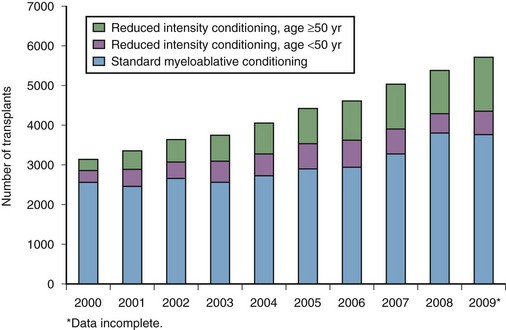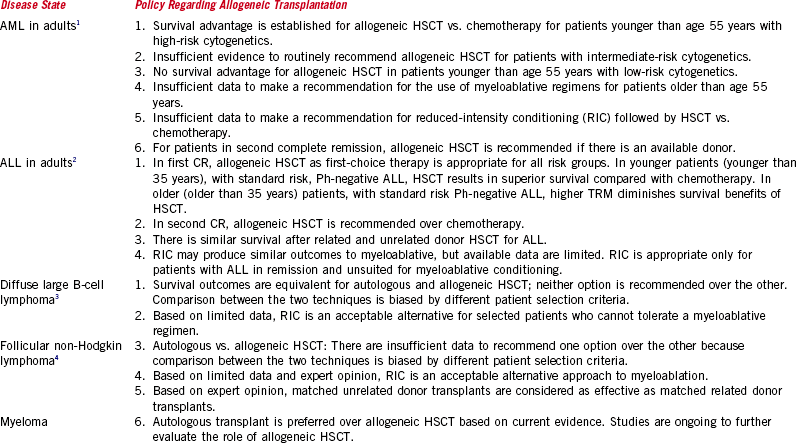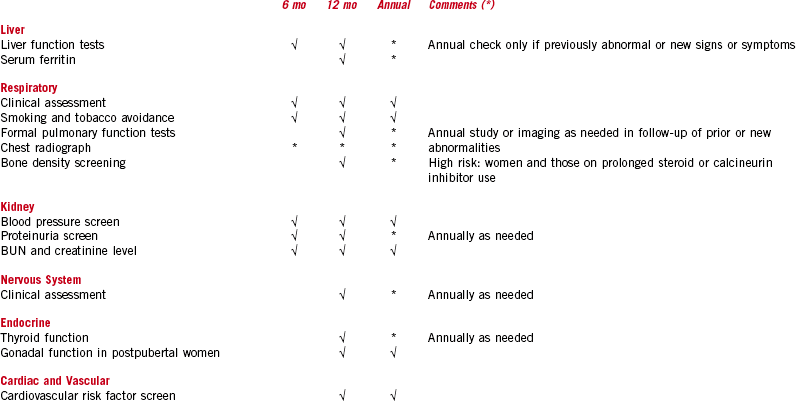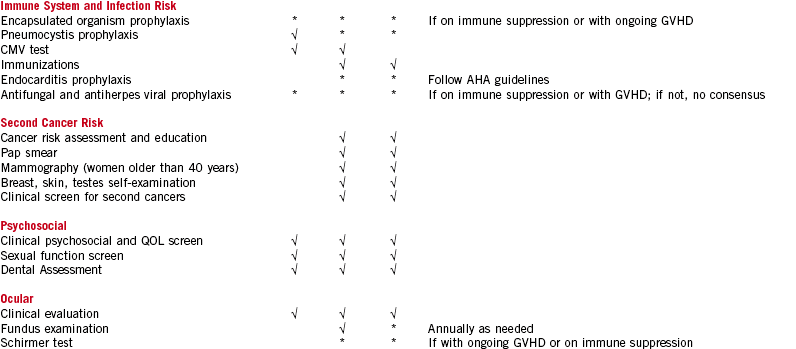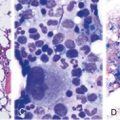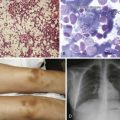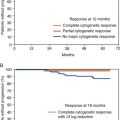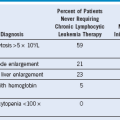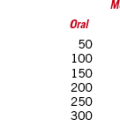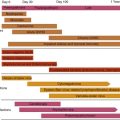Chapter 46 Indications and Outcome of Allogeneic Hematopoietic Cell Transplantation for Hematologic Malignancies in Adults
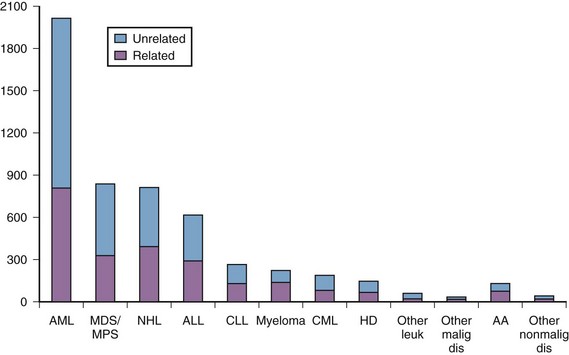
Figure 46-1 INDICATIONS FOR ALLOGENEIC HEMATOPOIETIC STEM CELL TRANSPLANTATION IN ADULTS (U.S. DATA), 2009.
Table 46-1 Consensus Definition of Conditioning Regimen Intensity
| Myeloablative Conditioning (MAC) |
|---|
| PROFOUND CYTOPENIA; NOT LIKELY TO RECOVER WITHOUT HEMATOPOIETIC CELL RESCUE |
| Nonmyeloablative |
| MINIMAL CYTOPENIA; AUTOLOGOUS RECOVERY OF HEMATOPOIESIS LIKELY EVEN WITHOUT TRANSPLANT |
| REDUCED-INTENSITY CONDITIONING |
Adapted from Bacigalupo A, Ballen K, Rizzo D, et al: Defining the intensity of conditioning regimens: working definitions. Biol Blood Marrow Transplant 15:1628, 2009.
Table 46-2 Retrospective Registry-Based Comparisons of NMA/RIC vs. Myeloablative Allogeneic Hematopoietic Stem Cell Tansplantation
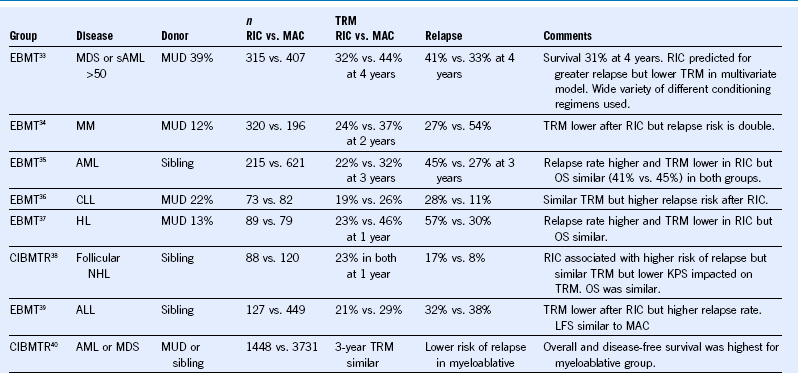
ALL, Acute lymphoblastic leukemia; AML, acute myeloid leukemia; CIBMTR, Center for International Blood and Marrow Transplant Research; CLL, chronic lymphocytic leukemia; EBMT, European Group for Blood and Marrow Transplantation; HL, Hodgkin lymphoma; KPS, Karnofsky performance score; LFS, leukemia free survival; MAC, myeloablative conditioning; MDS, myelodysplastic syndrome; MM, multiple myeloma; MUD, matched unrelated donor; NHL, non-Hodgkin lymphoma; NMA, nonmyeloablative; OS, overall survival; RIC, reduced-intensity conditioning; sAML, secondary acute myeloid leukemia; TRM, transplant-related mortality.
Timing of Hematopoietic Cell Transplantation and Transplant Referral
• HSCT outcomes are better when performed earlier in the course of hematologic malignancies.
• HSCT for advanced disease is associated with higher TRM and relapse.
• Appropriate timing of HSCT requires consideration of likely outcomes with nontransplant and transplant therapies and the suitability of patient to undergo HSCT.
• Even when not considered as front-line therapy, inordinate delay in HSCT is to be avoided.
• For patients who are potentially curable by allogeneic HSCT, consideration of HSCT should be addressed early in the treatment plan. This includes HLA typing and identification of suitable donors.
American Society of Blood and Marrow Transplantation Consensus Policy for Allogeneic Hematopoietic Cell Transplantation*
Transplant Referral: Guidelines for Transplant Consultation for Hematologic Malignancies*
Adult Acute Myeloid Leukemia
First complete remission with poor-risk cytogenetics or high-risk molecular markers
Adult Acute Lymphoblastic Leukemia
First complete remission up to age 35 years
1 Oliansky DM, Appelbaum F, Cassileth PA, et al. The role of cytotoxic therapy with hematopoietic stem cell transplantation in the therapy of acute myelogenous leukemia in adults: an evidence-based review. Biol Blood Marrow Transplant. 2008;14:137.
2 Oliansky DM, Larson RA, Weisdorf D, et al. The role of cytotoxic therapy with hematopoietic stem cell transplantation in the treatment of adult acute lymphoblastic leukemia: update of the 2006 evidence-based review. Biol Blood Marrow Transplant. 2011;18:16.
3 Oliansky DM, Czuczman M, Fisher RI, et al. The role of cytotoxic therapy with hematopoietic stem cell transplantation in the treatment of diffuse large B cell lymphoma: update of the 2001 evidence-based review. Biol Blood Marrow Transplant. 2011;17:20.
4 Oliansky DM, Gordon LI, King J, et al. The role of cytotoxic therapy with hematopoietic stem cell transplantation in the treatment of follicular lymphoma: an evidence-based review. Biol Blood Marrow Transplant. 2010;16:443.

